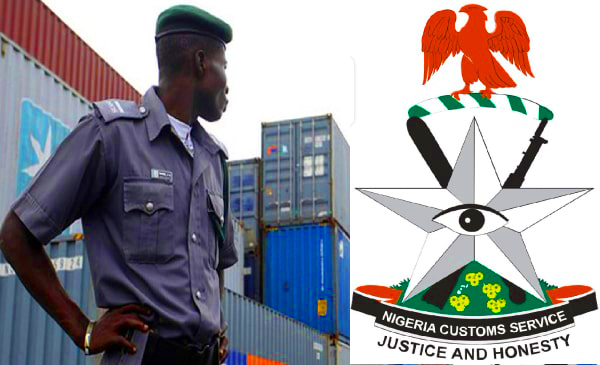Things you Need to Know About the E-manifest Procedure by the Nigeria Customs Service
Introduction
In the evolving landscape of global trade and logistics, the adoption of digital technologies is critical to ensure transparency, efficiency, and security in customs and cargo management. One of the most significant transformations introduced by the Nigeria Customs Service (NCS) in this regard is the Electronic Manifest (e-Manifest) system.
The e-Manifest system represents a digital leap from the traditional paper-based cargo manifest submission. It enhances the speed of cargo clearance, improves data accuracy, and fosters better coordination between shipping lines, freight forwarders, and customs authorities.
In this article, we will explore everything you need to know about the e-Manifest procedure in Nigeria—from its background and benefits to submission steps, requirements, legal provisions, penalties for non-compliance, and tips for seamless usage.
What is an E-Manifest?
An Electronic Manifest (e-Manifest) is a digitally submitted document that lists all cargo carried on board a vessel or aircraft arriving in or departing from Nigerian ports or terminals. It replaces the traditional paper manifest and provides customs with advance information about incoming or outgoing shipments.
The e-Manifest is a mandatory regulatory requirement for all shipping lines, airlines, and freight forwarders operating within Nigeria’s international trade system.
Legal Framework for the E-Manifest System
The e-Manifest procedure is backed by:
Customs and Excise Management Act (CEMA)
Nigeria Customs Service Modernization Project
International Maritime Organization (IMO) standards
World Customs Organization (WCO) SAFE Framework
The legal requirement to submit accurate cargo manifests in advance is further reinforced by the NCS e-Customs modernization policy and Standard Operating Procedures (SOPs) issued by the NCS.
Why the E-Manifest System Was Introduced
Before the e-Manifest initiative, Nigeria’s ports suffered from:
Delays in cargo clearance
Loss or tampering of documents
Lack of transparency
Revenue leakage
Difficulty in pre-arrival processing
To resolve these challenges, the NCS launched the e-Manifest system to:
Digitalize import/export manifest processing
Facilitate advance cargo information
Reduce port congestion
Curb fraud and smuggling
Promote trade facilitation
Who is Required to Submit E-Manifests?
Shipping lines / Airline carriers
Freight forwarders and consolidators
Bonded terminal operators
Authorized agents representing shipping interests
Each must be registered and certified by the Nigeria Customs Service to transmit manifests electronically.
When Must E-Manifests Be Submitted?
Sea vessels (imports): Must submit e-manifest at least 24 hours before arrival at a Nigerian port.
Air cargo: Submit at least 6 hours before landing.
Export shipments: Submit the manifest before loading.
Late submission can lead to penalties, cargo delay, and shipment seizure.
Key Benefits of the E-Manifest System
1. Faster Cargo Clearance
Customs can start risk assessments before arrival, enabling quicker cargo processing and release.
2. Accuracy and Traceability
The digital platform reduces human errors and ensures data traceability for audits and compliance.
3. Improved Security
Customs and security agencies can identify high-risk cargo before arrival, curbing smuggling.
4. Revenue Assurance
Accurate reporting minimizes under-declaration and revenue loss.
5. Cost Efficiency
Eliminates the need for couriering paper documents, saving time and money.
Key Requirements for E-Manifest Submission
Before submitting an e-Manifest, the shipping line or freight forwarder must meet the following:
a. Registration with NCS
Obtain a Carrier Code (CC) from the Nigeria Customs Service.
Apply through the NCS ICT unit and provide business registration details.
b. Certified Manifest Transmission Software
Must use NCS-approved software or integrate with Authorized Service Providers (ASPs) for transmission.
c. Electronic Signature
Used to authenticate and validate manifest submissions.
d. Standard Manifest Format
Use the UN/EDIFACT standard format for cargo data (accepted worldwide).
Information to be Included in an E-Manifest
The manifest must contain the following details for each cargo:
Bill of Lading (BOL) number
Name and address of consignee
Port of loading and discharge
Description of goods
HS Code or cargo classification
Weight and quantity
Vessel or flight details
Container numbers and seal
Customs port codes
Packaging type and dimensions
Any mismatch or incomplete data can delay clearance.
How to Submit an E-Manifest: Step-by-Step Procedure
Step 1: Register with NCS
Obtain Carrier Code
Complete Manifest Registration Form
Submit business documents and tax ID
Step 2: Connect to NCS Server
Use NCS e-Customs Portal or integrate software
Set up your profile with ASPs or directly with NCS
Step 3: Prepare the E-Manifest
Fill in all cargo details in UN/EDIFACT format
Cross-check accuracy before upload
Step 4: Submit E-Manifest
Submit via the Nigeria Integrated Customs Information System (NICIS II)
Ensure submission meets the 24-hour or 6-hour requirement
Step 5: Monitor Acknowledgement
NCS will validate the manifest and return confirmation or rejection notice
If rejected, correct errors and resubmit
What Happens After Submission?
Once successfully submitted, the Nigeria Customs Service will:
Run pre-arrival risk analysis
Flag suspicious cargo for further inspection
Share data with other regulatory agencies (NAFDAC, NDLEA, SON, etc.)
Approve manifest for arrival clearance
Penalties for Non-Compliance
Failure to submit or inaccurate e-manifest submission attracts the following consequences:
Delay in cargo clearance
Fines and administrative penalties
Suspension of shipping line operations
Seizure of cargo under CEMA
Blacklisting of the freight forwarder or line
Common Errors in E-Manifest Submissions
Avoid these pitfalls to ensure compliance:
Wrong port codes
Typographical errors in cargo description
Missing consignee address
Incorrect HS codes
Late submission
These issues can delay cargo release and trigger customs queries.
E-Manifest and Other Customs Procedures
The e-Manifest system is linked with other NCS digital systems, including:
Single Window Trade Platform
Pre-Arrival Assessment Report (PAAR)
Automated Duty Payment System
Post Clearance Audit Platform
NPA’s Cargo Tracking Note (CTN)
This integration ensures a harmonized trade ecosystem for imports and exports.
Practical Tips for Effective Use of the E-Manifest System
Train Your Team
Ensure staff understand manifest coding, standards, and deadlines.
Use Reliable ASPs
Partner with Authorized Service Providers for secure transmission and updates.
Back-Up Your Data
Store electronic copies in cloud or physical drives for reference and audits.
Verify Before You Submit
Double-check consignee data, cargo codes, and vessel info.
Track Customs Acknowledgments
Monitor feedback after submission and respond promptly to corrections.
Keep up with Regulatory Changes
Customs rules are dynamic. Stay updated via NCS circulars or newsletters.
Benefits to Government and National Economy
The e-Manifest system supports national goals such as:
Increased customs revenue
Improved ease of doing business
Streamlined cargo traffic
Reduction in port dwell time
Improved Nigeria’s ranking in global trade indexes
Stakeholders in the E-Manifest Ecosystem
Nigeria Customs Service (NCS) – Policy oversight, enforcement
Shipping Companies / Airlines – Submit manifests
Terminal Operators – Receive cleared cargo
Freight Forwarders – Prepare cargo documentation
Importers / Exporters – Beneficiaries of faster processing
Authorized Service Providers (ASPs) – Technology platforms for submission
Regulatory Agencies – Access cargo info for inspections
Future Developments in the E-Manifest System
Full integration with port community systems
AI-based risk profiling and alerts
Blockchain for cargo authenticity
Mobile e-manifest tracking apps
Data-sharing with international customs
These initiatives aim to fully digitize Nigerian customs and position it as a trade-friendly destination.
Conclusion
The e-Manifest procedure by the Nigeria Customs Service is a game-changer in the logistics and international trade space. By embracing this electronic system, stakeholders can enjoy faster cargo clearance, enhanced compliance, reduced corruption, and improved trade efficiency.
Contact Us
For shipping companies, freight forwarders, importers, and agents, mastering the e-Manifest process is no longer optional—it is a vital requirement for seamless operations. Compliance with e-manifest rules not only ensures timely cargo processing but also boosts Nigeria’s international trade credibility.
At Chaman Law Firm, we assist importers, freight operators, and logistics providers in navigating customs processes, ensuring regulatory compliance, resolving disputes, and avoiding costly delays.
Need Legal Support with Customs Clearance, E-Manifest Compliance, or Import Documentation?
📞Phone: 08065553671, 08096888818
✉ Email: chamanlawfirm@gmail.com
📍 Address: 115, Obafemi Awolowo Way, Allen Junction, Ikeja, Lagos, Nigeria


